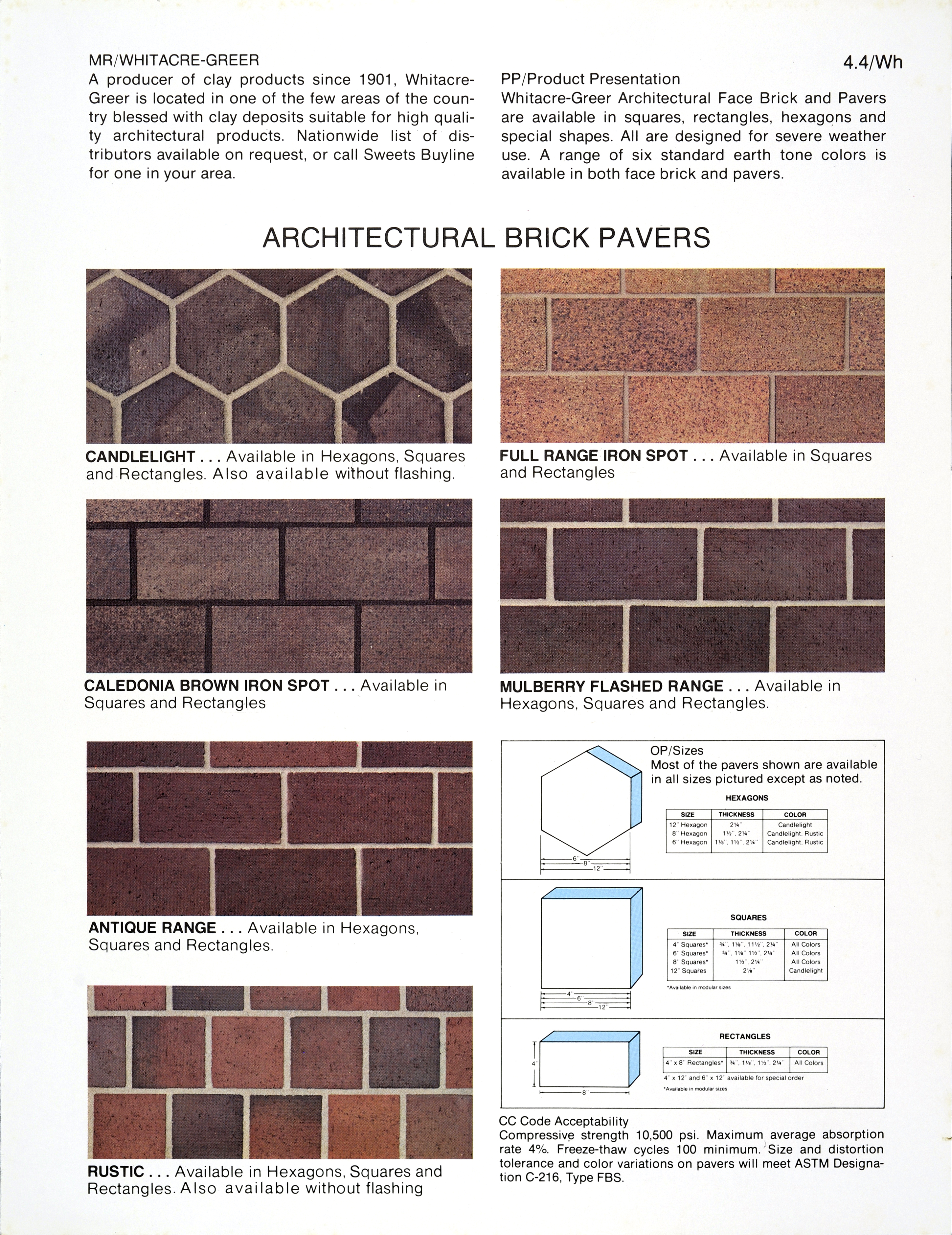I felt WG had a real need for a ceramic engineer. My focus on this need sharpened whin in the late 1960s, WG shipped paving brick, quite unfit for their intended use, for a large job at Indiana University. Many of the pavers failed due to freeze-thaw cycles. Such failures were typical of the extruded pavers of the day, buy usually just a small percentage of the job failed. This type of failure inhibited clay pavers from achieving any real position in the architectural paving business. WG had successfully overcome the problem early on by using a fireclay material and flashing in periodic kilns to attain attractive colors. By 1965, WG was arguably the premier clay brick paver supplier in the U.S. Then the market changed and red brick, made with shale, dominated the market. WG’s local shale did not produce a good product due to poor size control, warpage and freeze-thaw failures if under fired. As more of the market moved to shale and the periodic kiln costs continued to rise, the WG position as a paver supplier dropped.
Indiana University sued WG along with the architect, general contractor, subcontractor and many suppliers, as much more than the brick failed on this job. There was a massive lawsuit. John Buchman of the Day Ketterer firm represented WG. After a long trial, a settlement was reached and since the building failures had been so expensive, WG’s damages did not put us out of business.
John Buchman was instructive in many areas of law. However, he told me two things that stuck with me. One, “Product liability turns on whether or not the product is suitable for its intended use.” Two, “Write it down; when you reduce a matter to writing, it seems to focus your mind better.”



